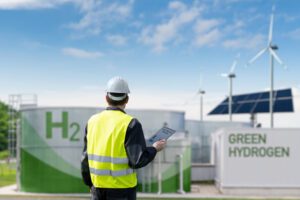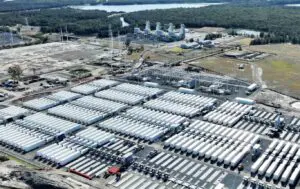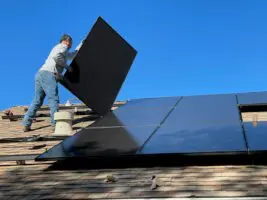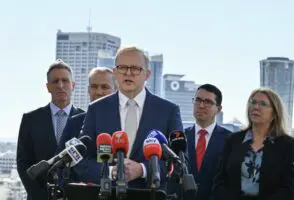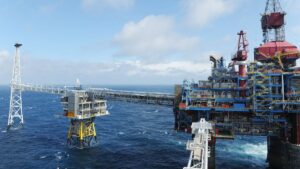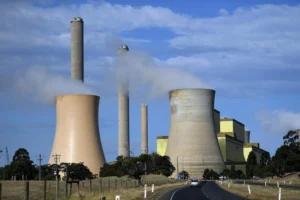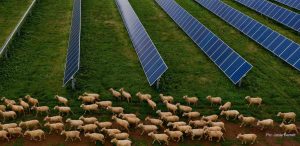The Australian Energy Market Operator has convened a workshop in early February to discuss the system strength issues and network blockages that have affected around 40 large scale wind and solar projects in western Victoria and south-west New South Wales.
The meeting called by AEMO follows widespread concern in the industry about the issues affecting the grid – and particularly newly identified “system strength” problems – which has resulted in the output of five major solar farms being reduced by half, and other ready-to-roll projects told they face potentially significant delays on connections and commissioning.
In all, about 40 large scale wind and solar projects totalling more than 4,000MW of capacity are affected in some way, and the growing level of frustration – including a claimed lack of transparency – resulted in the Clean Energy Council hosting a meeting of 15 of the biggest project developers and owners in Melbourne on Thursday.
CEC director of energy transformation Lillian Patterson told RenewEconomy on Friday the industry wanted greater transparency and understanding of the issues, and more clarity around the timelines for solutions, and connections.
“There is certainly a strong sense of frustration – people are frustrated by lack of transparency, and timing of likely solutions,” she said. “The industry wants to gain more detailed and accurate understanding of the problem.”
The depth of the issue appears to have only been realised in the second half of last year, when modelling pointed to the possibility of uncontrolled “oscillations” of large scale solar plants in the West Murray region of the Victoria grid – should there be a major fault elsewhere.
In response, AEMO reduced the output of five solar farms – Wemen, Bannerton, Karadoc and Gannawarra in Victoria, and Broken Hill in NSW – by half, pending a solution. That was in September, but an issue that was expected to be resolved in a matter of weeks drags on, and it is not clear that a proposed “re-tuning” of the SMA inverters common to all the projects will suffice.
The issue adds to the increasing costs and uncertainty over new connections. Some projects have been urged to add battery storage, and others required to invest in “synchronous condensers”.
But it is also not clear that either technology can provide the complete answer to this particular issue, which RenewEconomy understands differs from frequency or inertia issues. More grid investment – including a new link to NSW – is mooted as the most likely complete solution, but that could take years.
AEMO says the issues that are emerging in the area are “unique to the world” given the amount of wind and solar in the grid and the “skinny” nature of the country’s networks. It has warned that the local grid is “balanced on a knife edge”.
The issue reached critical levels in recent weeks when the owners of other projects – some of them completed and ready to produce – were told by AEMO that connections and commissioning would only be handled one by one.
This raised the prospects of significant delays to generation, and further production cutbacks. There is talk that some projects may be in financial stress, unable to meet agreed power purchase contracts, exhausting “force majeure” declarations, and having to talk to banks about managing debt issues.
“A lot of people are under stress – the connection process is already difficult for many projects and this issue could go longer than expected,” Patterson said. “That is costing a significant amount of money and there is no indication when the issue will be resolved.”
The problems are also affecting some projects that won contracts under the Victoria government renewable energy auction program, and some suggest it may make at least the interim renewable energy targets – such as the 40 per cent by 2025 – difficult to reach.
“The mood was pretty dark,” said one attendee. “People are trying to think of solutions, and I feel for those plants that have been curtailed. The fact that it is retrospective is not good.”
An AEMO spokesperson told RenewEconomy on Friday that a workshop would be scheduled for early February where the issue could be discussed in full. Network operators and other regulators will also be invited.
“AEMO is committed to working closely with market participants on finding solutions to the unprecedented instability and security issues of a rapidly transforming energy market at a state, region and individual generator basis,” the spokesperson said.
“West Murray is an area that continues to attract significant new investment despite being a remote and electrically weak part of the National Electricity Market, with low demand and decreasing marginal loss factors.
“We understand and share the frustration that the dynamic and fast changing nature of some of these technical challenges is causing. We are committed to working collaboratively and transparently to address and deliver short, medium and long term solutions to these Australian-first challenges.
“As part of our ongoing engagement, AEMO is hosting a forum in early February for market participants, businesses and industry to answers questions and discuss proposed solutions that cover technical issues, system development and security management plans going forward.”


